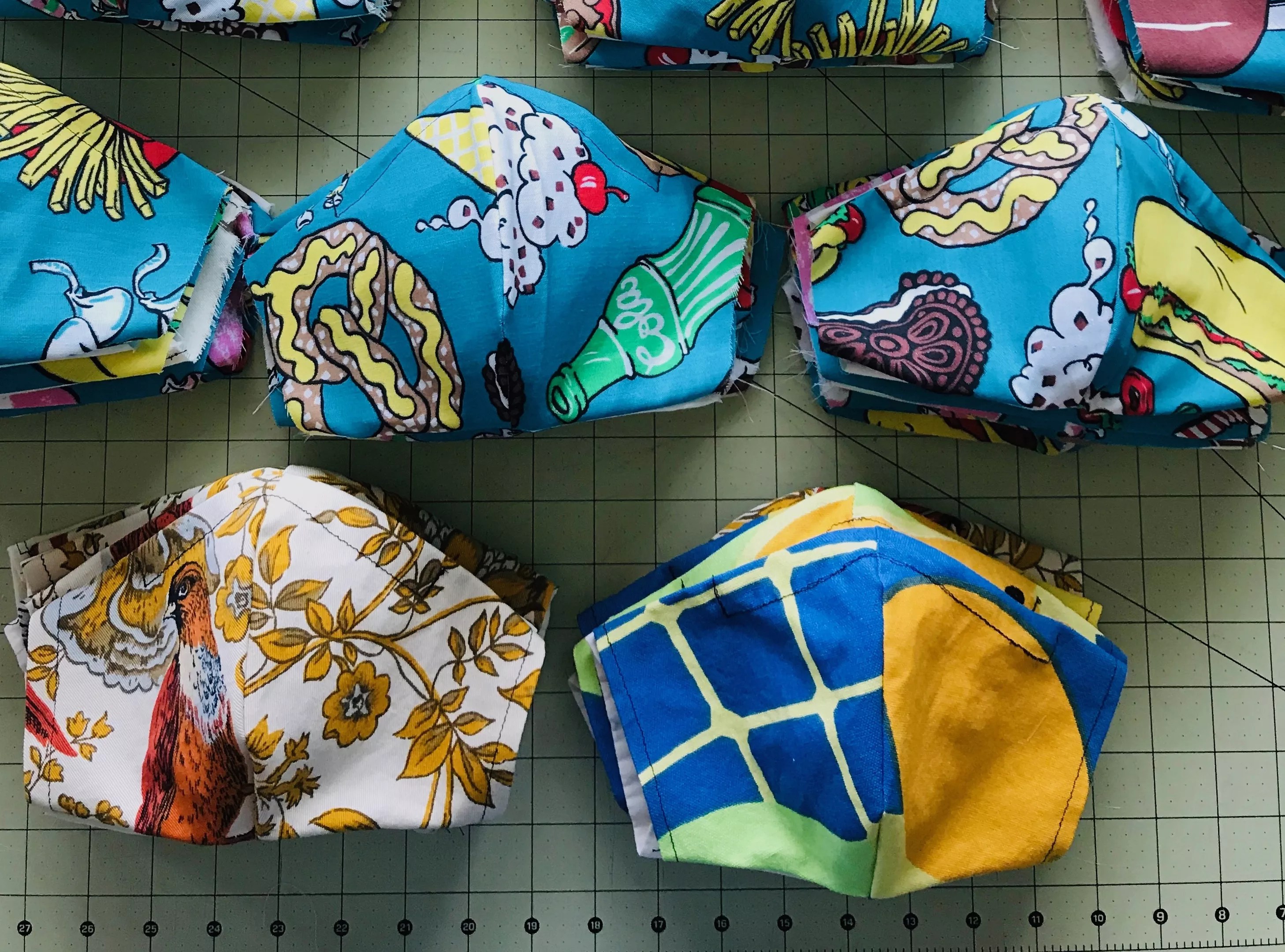
Laura Shill

Audio By Carbonatix
With one good snack and three coffee filters left in her kitchen, artist Laura Shill is busy stitching together DIY masks made from bedsheets and landscaping fabric that she had around her house.
An early April snowstorm is coming, and Denver’s homeless shelters are sure to be packed. They need something to prevent the spread of COVID-19, and shelter workers believe that home-sewn cotton masks, with a polypropylene filter, would be helpful.
Shill and a handful of other Denver artists, including Frankie Toan and Nicole Banowetz, who have turned their home studios into makeshift mask factories, are stitching fast, using blueprints from the grassroots group Denver Mask Task Force.
Are these homemade masks as effective as N95 respirators in preventing the transmission of the virus? No. But with the best research available and some DIY ingenuity, these artists believe they can help.
Shill’s current work investigates care, human connection and power. In her most recent installation,
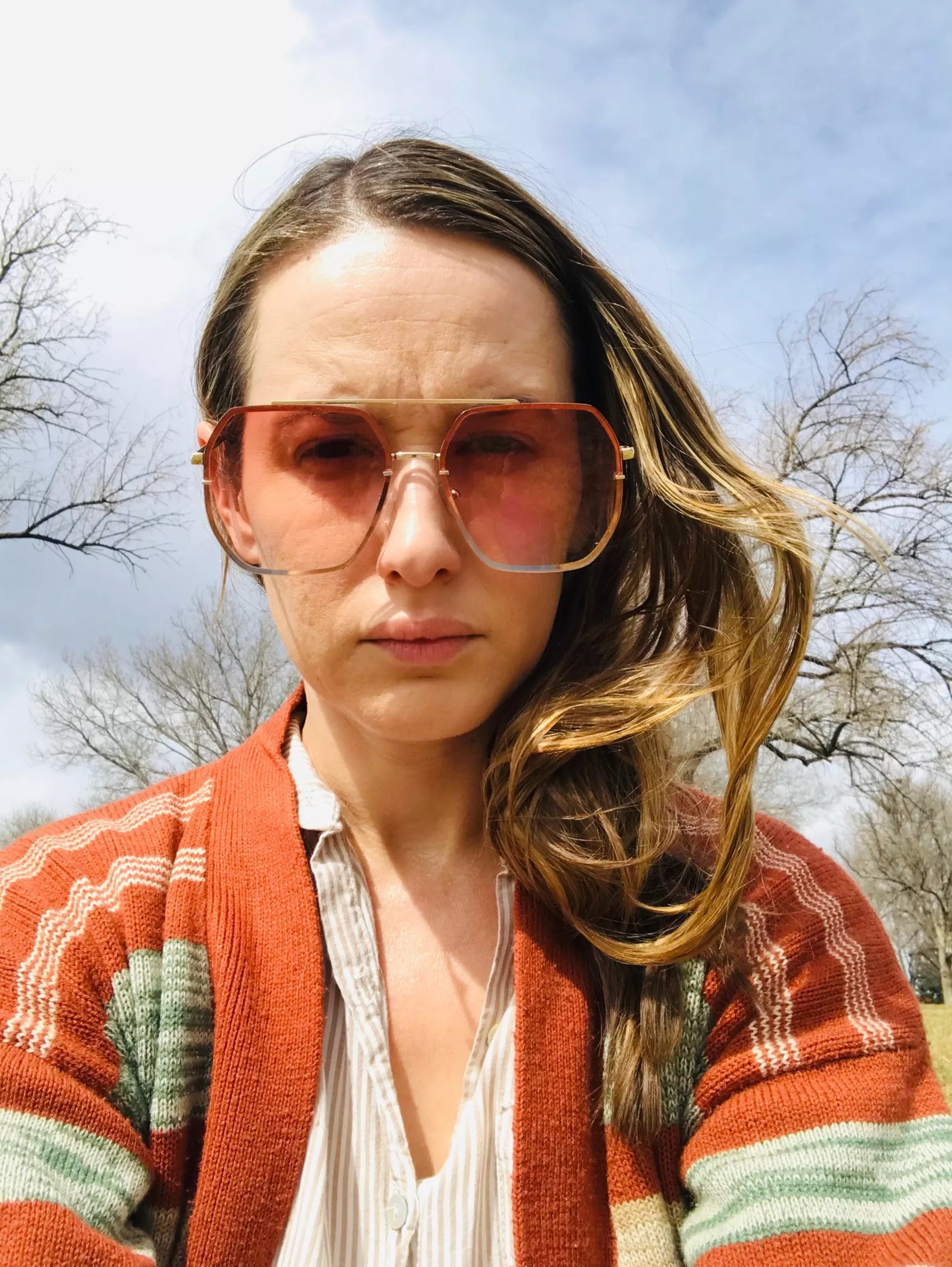
Laura Shill has already sewed more than fifty masks.
Laura Shill
part of Black Cube Headquarters’ exhibit The Fulfillment Center, she offered twenty Hasbro robotic cats up for adoption, on one condition: She would be in regular communication with the adoptees. The project was an effort to explore how robotic care differs from human care. Can we connect with robots in a genuine way? And what, if anything, makes human care so special?
Before the Black Cube installation, Shill experimented with the robotic cats. She had heard that a cat’s purr might be healing. Attempting to soothe her persistent anxiety, she put a cat robot on her chest. “For a second, I had a response to it that was genuine,” she says. “But it was fear. I thought the cat might kill me.”
But many of the people who had borrowed cat robots reported that they found them comforting, particularly related to grief. When the installation came down, Shill had planned to donate them to nursing homes in the area, to be used by Alzheimer’s patients. But news of COVID-19 threatening elderly people in the facilities made her hesitate to give the purring robots away.
Now she’s sewing masks, surrounded by twenty boxed-up robotic cats that aren’t offering her an ounce of comfort.
As for the sewing, “It’s very slow. I feel like every time I’m not making a mask, somebody I care about could be getting sick,” she says.
Banowetz, who explores microorganisms through massive installations, returned to Denver a few weeks ago from an artist residence in California. There she had spent six weeks creating an inflatable installation and
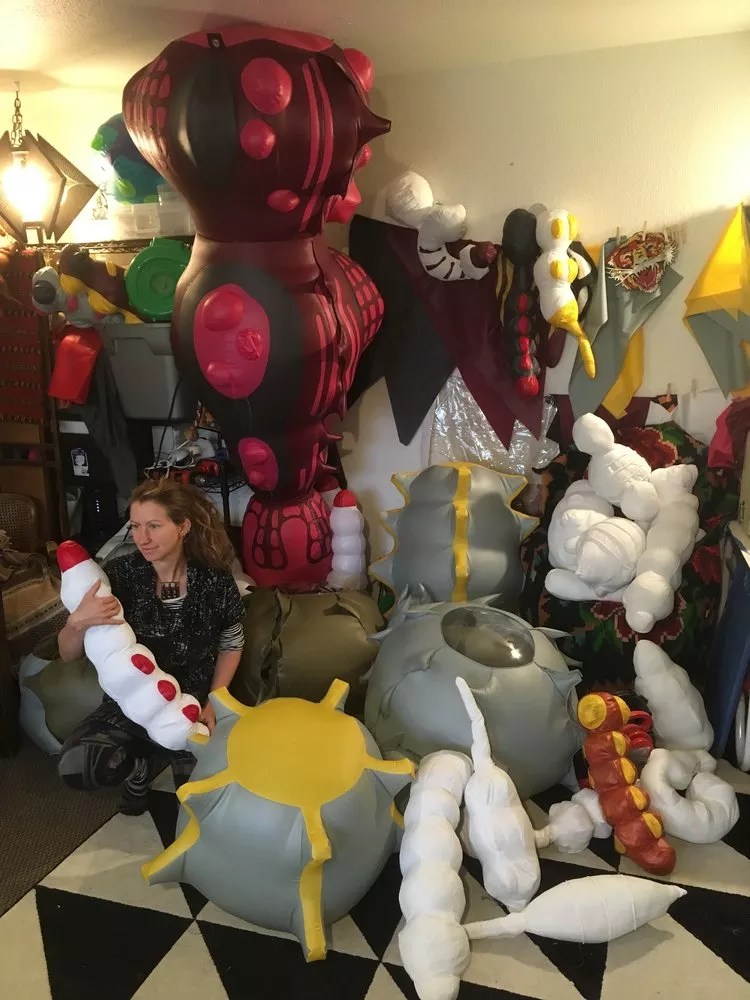
Nicole Banowetz in the studio.
Nicole Banowetz
performance exploring how climate change is affecting the interdependent relationship between yucca moths and Joshua trees. Back home, she felt sick and isolated herself from others. By the time she was certain she didn’t have COVID-19, Governor Jared Polis had issued the stay-at-home order, and so she continued to hunker down.
Wanting to find ways to help and inspired by an international movement of DIY makers and artists sewing masks out of household fabrics, she stitched together a few prototypes, shot photos of them, and sent the images to her health-care worker friends. They weighed in on which they liked, and she settled on a design.
Then Banowetz and Shill connected, and they started giving masks to organizations supporting people experiencing homelessness.
Soon they were joined by Toan, who had started sewing masks after a friend who’s a health-care worker showed COVID-19 symptoms. Known for joyful, plush sculptures, installations about queer history and collaborations with the Secret Love Collective, Toan has spent years working at the intersection of craft, installation, fabric and queer theory.
“I’ve had a lot of questions about what is the purpose of art in this time,” Toan says. “Working on these masks has given me purpose in this time. I sew all day, every day. This is something I can do really easily with my skills and with what I do in my studio. It’s connecting me to other people and a larger community. There have been other times in my life when I’ve been like, ‘What are my skills worth to humanity?’ In this moment, I don’t find myself questioning that as much.”
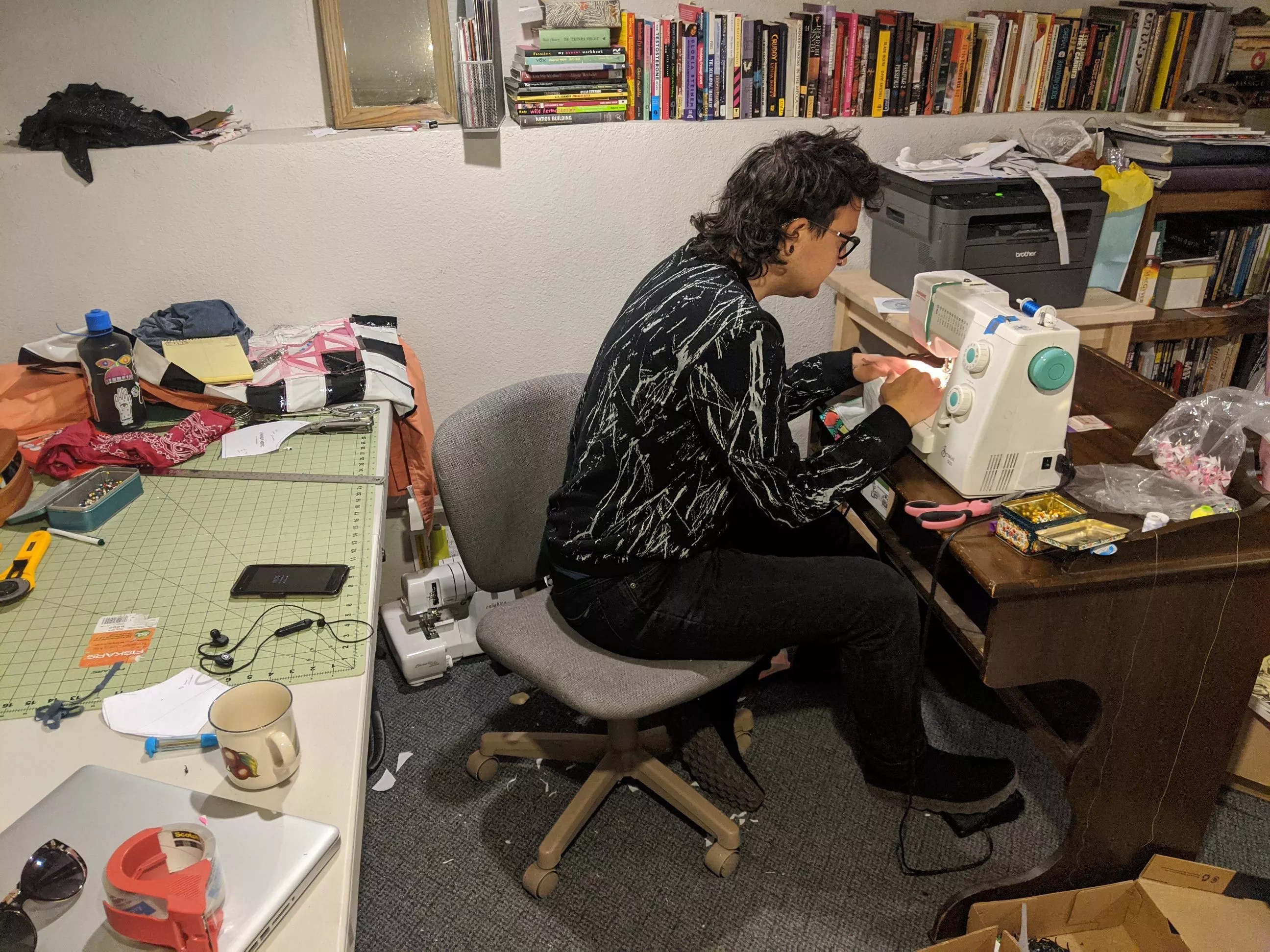
Frankie Toan busy at work.
Frankie Taon
The entire project is scrappy, and the artists are working with whatever fabric they have on hand; while they’re trying to have some materials delivered, there are no guarantees as to when – or if – they will come.
“We’ve been putting in orders from certain polypropylene fabrics,” explains Toan. “With shipping, it’s uncertain if or when those materials will arrive. Elastic has been really hard to get. I’ve ordered a ton, and it was supposed to arrive last Saturday. I can’t even get updates on the shipping. If we can’t get elastic, we can make yarn out of T-shirts that can hopefully function in a similar way.”
The last week of March, Shill reached out to Louise Martorano, executive director of RedLine Contemporary, for recommendations of service providers that might need masks. Martorano not only made some suggestions, she wrote a quick grant to an anonymous Boulder donor that would help with two challenges: employing artists who had lost work after coronavirus closures, and producing masks for people experiencing homelessness.
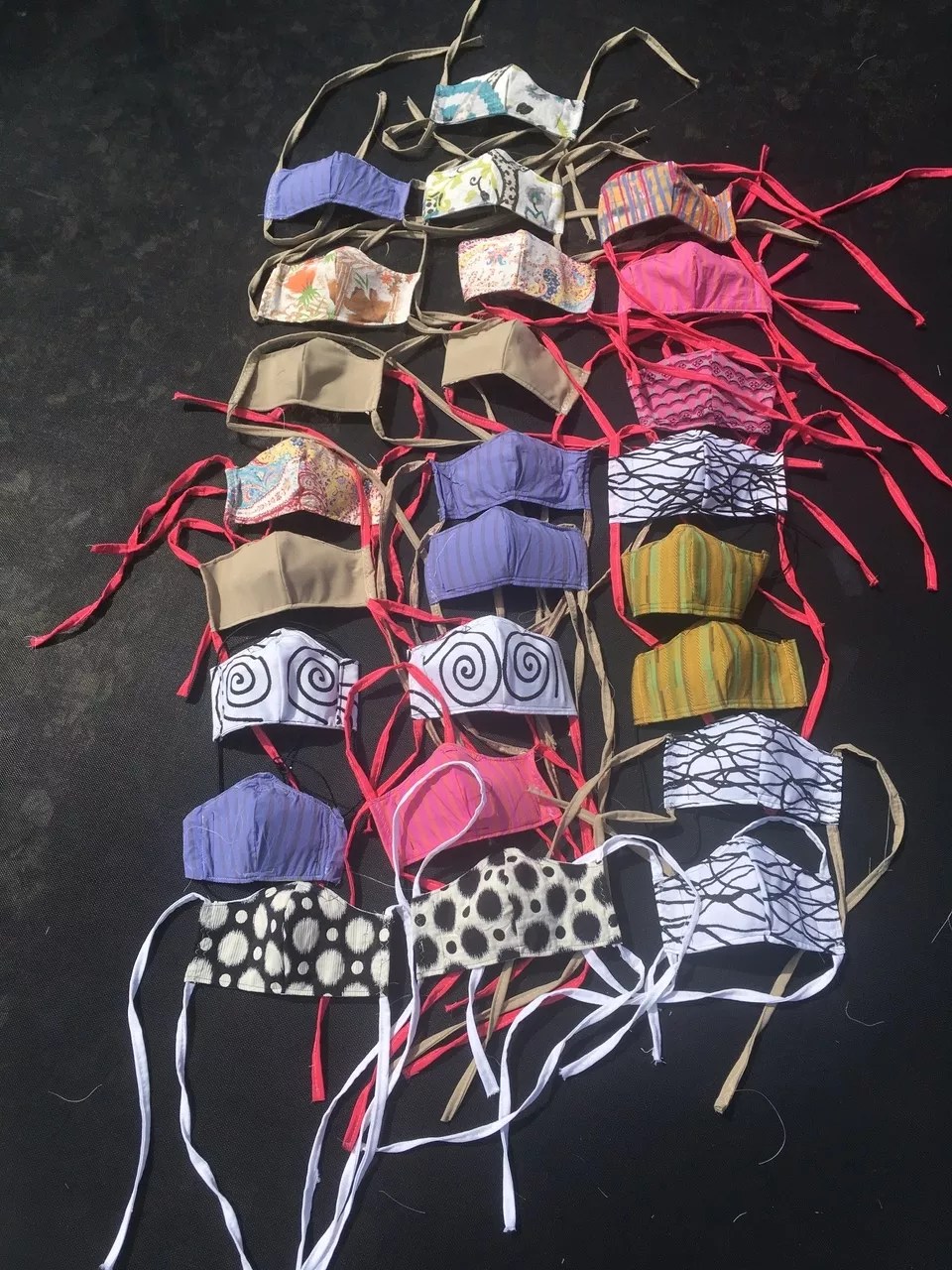
Nicole Banowetz’s masks.
Nicole Banowetz
Then she recruited Jennifer Ghormley, Matthew Stearns, Osha Goertz, Rebeccca Tischler, Elyssa Lewis, and Lori Owitcz to join Shill, Toan and Banowetz in their efforts. The grant requires that they make thirty masks a week each, for eight weeks, all to be donated to Denver’s homeless shelters. So far, the team is working with the Colorado Coalition for the Homeless and the St. Francis Center.
“We’re all rushing right now to create as many masks as we can before this snowstorm comes,” says Shill. “We really want to reduce spread for that really vulnerable population. It feels really great to be connected with these other artists through isolation. We’re all working remotely, but we’re all sharing materials and sharing resources, encouraging each other and checking in.”
“Artists and makers in general were doing this way before a lot of other people were thinking about it,” says Banowetz. “I think creatives and DIY folks are used to doing things for themselves and not relying on government or business. … We’re naturally set up to have that mindset to figure out how to do things on our own, before it’s too late.”